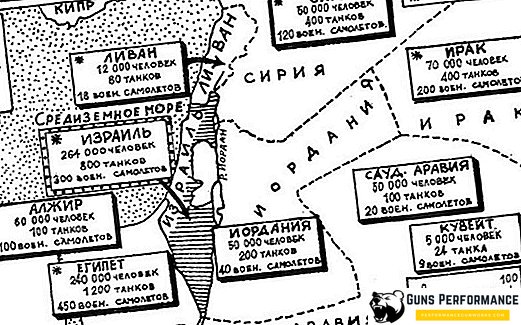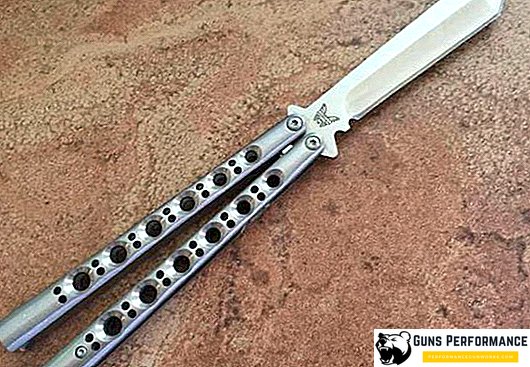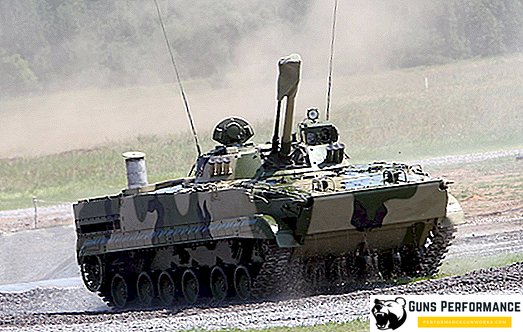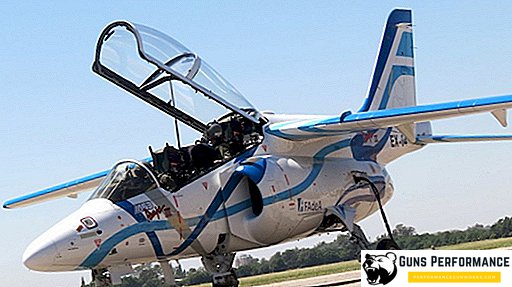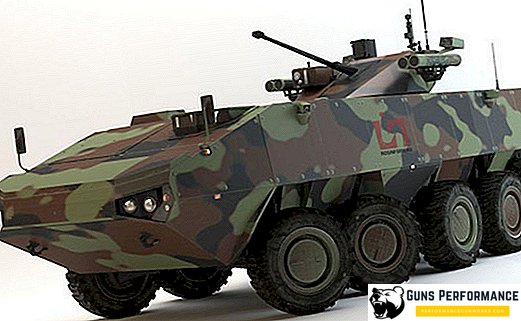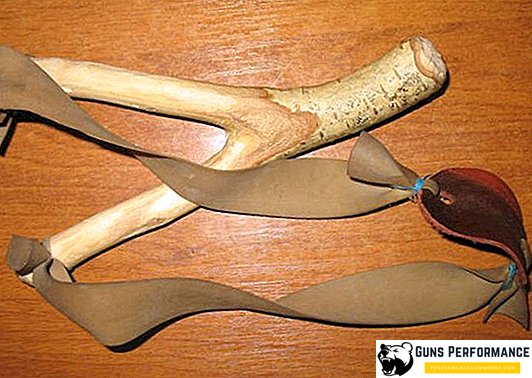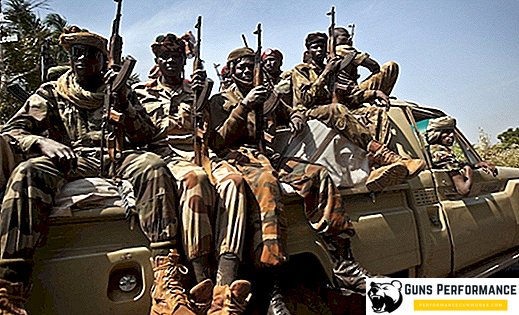Like most countries in Latin America, Cuba has long been in the status of a Spanish colony. For almost five centuries, from 1511 to 1895, the country was ruled by the Spaniards, considering the island to be their patrimony. The centuries-long domination of Spain collapsed in the middle of the XIX century with the beginning of the national liberation movement, which embraced not only Cuba, but practically the entire Western Hemisphere.
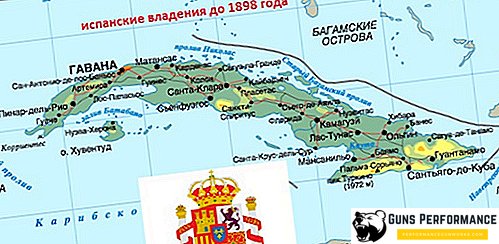
The national liberation movement on the island resulted in a full-scale war of independence, in which the national-patriotic forces were able to shake Spanish rule. The victory was incomplete, only limiting the power of the Spanish governor. For the first time in its history, the country received government bodies, including the presidency of Cuba. However, the administrative-political reforms carried out by the Spaniards turned out to be sham and were of a formal nature. The main governor of the island remained the Spanish governor-general.
From this point on, the island becomes a tangle of geopolitical contradictions between the aging metropolis and the United States, which sought to extend its influence throughout the Western Hemisphere. The end of the Spanish rule on the island was a new war of liberation, which broke out in 1895. Spain finally loses control of the rebel colony as a result of defeat in the Spanish-American war of 1898. Formally, Cuba becomes free, but under the current constitution, the country falls within the scope of US political influence. Instead of the Spanish troops and the administration, American troops appear on the island, for 3 years the country is ruled by the American military administration.

First Republican Presidents
New history of the country begins with the beginning of the XX century. Getting rid of Spanish domination, the country is moving along the path of becoming a democratic state. Under the patronage of the American administration, led by General Edward Wood, a new political class is being formed on the island. The leader of the national liberation movement becomes the Republican Party of Havana, which is headed by an American protégé, Republican Thomas Estrada Palma. The same person becomes the winner of the announced presidential elections, held on the eve of the new 1902. The first president of Cuba officially took office on May 20, 1902, and remained at his post until September 28, 1906. That is exactly how the First Cuban Republic existed.

Leading the country, President Palma set a course for the full Americanization of Cuban society. Despite the fact that the chosen political course of the head of state was at odds with the policies of most political parties in the country, Thomas Estrada Palma was reelected for a second term. This was facilitated not only by a successful foreign policy of state power, but also by competent management of the internal affairs of the country. However, the era of the first Cuban president was short-lived. The end of the republic and the successful stage of the democratization of the country put a coup d'état, led by the opposition liberal movement. In the conditions of political chaos and an unstable social and social situation, American troops were brought into the country. The first president of Cuba and the government were forced to resign.
The period of the next occupation of the island lasted until 1909. All this time, a direct presidential regime operated in Cuba. The interim governor appointed in the White House was the main and only representative of the supreme power on the island. For two years and 107 days, Cuba was completely ruled by Governor Charles Edward Magun.

In 1908, the Americans once again took the initiative, leaving the Cubans to decide their own fate. In the country, the republican form of government was restored, which resulted first of all in the holding of presidential elections. The winner of the election race was the representative of the liberal party José Miguel Gomez, who became the second president of the Republic.
With the arrival of the highest state post José Miguel Gomez, the status of the president of the country begins to lose political weight. The new head of state was implicated in corruption scandals related to the distribution of land to American concessions. However, the political life of the country under President Gomez becomes the scene of social, social and civil contradictions, the civil association of African-Americans is gaining momentum. The law prohibiting the creation of political parties based on race is a response to the growth of political activity of the country's colored population. The second president of Cuba has left an ambiguous mark in the history of the country. Constant wavering from side to side, maneuvering between American patrons and the domestic opposition contributed to the rapid decline in popularity. This led to the fact that in the subsequent presidential elections the liberals failed miserably to the conservatives. The representative of the Conservative Party, Mario Garcia Menocal (reigned 1913-1921), became the new president of the country.

The era of the country's capitalization is connected with the name of the third president of the Cuban Republic. The success of the board provided economic conditions. On the eve of the First World War, world prices for sugar, which was the main source of foreign exchange earnings for Cuba, soared rapidly. The country introduces its own national currency - the Cuban peso. There is a building blocks of Havana, built highways and railways. In the wake of the economic boom, Mario Garcia Menokal was reelected for a second term. However, following the rapid growth, followed by an economic recession. Sugar industry of the island was on the verge of bankruptcy. Unsuccessful reforms of the banking sector led to the collapse of the entire banking system of the country. Along with the crisis, American capital came to Cuba, putting the economy of a small state into complete economic and political dependence on Washington.

While serving as president for two consecutive terms, Menokal turned Cuba from a run-down province into an elite financial business club of America. The main American banks have settled in Cuba, offices of major firms and companies have appeared. However, on the domestic scene, the policy of the third president was a failure. In the next presidential election, the winner was Alfredo Sayas y Alfonso, who served as vice president of the country in 1909-1913.
Beginning of the era of dictatorship
The coming to power of the conservatives marked the change in the country's political course, which was based on the nationalization of all sectors of the economy. Cuba, which had by then become an unofficial American colony, was gradually slipping into the status of a raw material appendage of large American monopolies. Alfredo Sayas-y-Alfonso, who on May 20, 1921, assumed the presidency of the country, became a stronghold for the oligarchy. Against the background of the general impoverishment of the country, the capital of companies and firms close to the structures of power grew rapidly. On the island, radical elements, movements and organizations, which proclaimed the course of overthrowing the power of the oligarchy, became active again.

From the next revolution, Cuba was saved by the presidential election of 1925, which was won by Gerardo Machado. From this point on, Cuba enters a period of radical liberal reforms aimed at democratization. However, soon the hopes of the country's political elite were replaced by disappointment. The fourth president quickly discovered his narration. Political repressions were conducted in the country, opposition political parties, unions and movements were dispersed and banned. The wave of the Great Depression, which reached Cuba in the early 1930s, contributed to the emergence of an explosive revolutionary situation in the country. The result of the Machado rule was a general strike on March 20, 1930.
After having been president for two terms in a row, Machado was forced to end his political career by fleeing the country in August 1933. Fulgencio Batista enters the political arena of Cuba. A whole epoch is associated with the name of this person in Cuba. Starting a political career as a sergeant of the national Cuban army, Fulgencio Batista will soon become the commander-in-chief of the Cuban army. Not far off is the day when the former sergeant will become president of the country, and after that he will assume the functions of a dictator.

Meanwhile, the country was experiencing an acute political crisis. For a short period, the power in the country, President Cescendes, however, this temporary worker was soon replaced by a more loyal political figure for Cubans. Until 1936 the country was in the power of the so-called Provisional Government. At the post of the head of state, persons of different political persuasion, every time a new figure appeared, who promised to put an end to the leapfrog with the state power. The only prominent figure on the political Olympus of Cuba at this time was Ramon Grau San Marti. This man served as president of the country for 127 days. After him, the political crisis in the echelons of power continued until May 1936, when José Miguel Gomez, the second president of the Republic of Cuba, again became president of Cuba. But literally after 7 months, he was replaced by Federico Laredo Bru, representing the National Union. All this time, the Provisional Government and the main institutions of power in Cuba were under the control of the Student Union and the leadership of the Cuban army.
The years of Cuba's economic and political heyday
From 1936 to 1944, Cuba finally found political calm and economic stability. The country was de facto controlled by Fulgencio Batista, President of Federico Laredo Bru existed de jure in Cuba, and government bodies also worked. Subordinating the entire state apparatus to his will and using Washington’s unlimited support, Batista wins the 1940 presidential election.

Batista comes to power in a country where there is harsh political censorship, there is virtually no opposition. However, against this background, it is difficult in the country not to notice serious changes in both the social and political spheres. The most significant step of the ruling regime was a large amnesty, referring to political prisoners. During this period, the opposition parties come out of the underground. On the eve of the next presidential elections of 1940, the Constituent Assembly begins its work, which consists of 76 deputies representing 9 political parties and movements. The result of the work of parliamentarians was the 1940 Constitution, which legitimized the state power in the country and designated the powers of all participants in the political process.

The election of Batista as the ninth president of the Republic of Cuba was held in the manner prescribed by the new Basic Law. Four years of Batista’s (1940-1944) presidency have become a time of economic and political breakthrough for the country. Despite the successes achieved, Fulgencio Batista lost the next election and disappeared from the political arena for a long 8 years. After him, the highest position in the country was held by the following persons:
- Ramon Grau San Martin served as President of Cuba from October 1944 to 1948;
- Carlos Prio Sokarres took office as president on October 10, 1948. Overthrown in March 1952 by the military led by Fulgencio Batista.
In 1952, the country plunged into the abyss of a new coup d'état, which was headed by Batista, who decided to run again for the presidency of the country, but clearly losing his opponents.
Removing the current president of the country from power, Batista declared himself interim president for two years. With the re-entry of Batista to the presidency, Cuba becomes the capital of the playing world, a transit point for drug and gun dealers. In Havana, illegal capital rotates from all over the Western Hemisphere. The country's economy is fully controlled by US capital, including the most important and strategic sectors of the economy. The volume of American investments in Cuba’s economic sector in 1958 amounted to more than $ 1 billion. The political regime of Batista relied on mafia structures and received huge profits and kickbacks as an intermediary. In the hands of rich landowners were almost all suitable for cultivation of agricultural land and land. The dictatorship of one person was practically established in the country.

At the same time, Fulgencio Batista, seeing the rapid decline in his popularity, tried to impart a democratic entourage to his regime. In 1954, regular presidential elections were held in the country, in which only one candidate won - the current president, Fulgencio Batista. All subsequent years, the Batista regime actively fought against the revolutionary movement in the country, which was led by the Communists. The final of the confrontation was the events of the end of 1958, when the revolutionary forces approached the capital, Havana. The twelfth president of the country, Fulgencio Batista, fled the country on January 1, 1959. In the conditions of revolutionary chaos, the country was headed by interim President Manuel Urrutia Lleo, who was at the highest post for 196 days, until such time as new presidential elections were held in the country.

Revolutionary Cuba and Presidency
The first presidential elections in the country of the victorious revolution were scheduled for July 1959. With the overwhelming superiority of the socialists and the communists, Osvaldo Dorticos Torrado became the only candidate in the elections. He represented the People’s Socialist Party of Cuba. The status of the Head of State in the country formally belonged to the President, but all power belonged entirely to Fidel Castro, who headed the Council of Ministers of the Republic of Cuba.

As for the presidency, this position existed in the state power system until 1976. The successor to the fourteenth Cuban President was Fidel Castro, who became the Chairman of the State Council. Officially, the post of president of the country has been abolished from this point on, and all government bodies are defined in the new 1976 Constitution. Fidel Castro retained the highest leadership position with the changed name until 2008. The duties of the Chairman of the State Council, which completely compares its goals and objectives with the program of the Communist Party of Cuba and is the leader of all the main state structures, have expanded.
The fate of the country was in the hands of the communist regime, which quickly turned into a dictatorship. All the leading posts in the country were occupied by members of his family and Castro's associates in the revolutionary struggle. For example, Fidel's brother, Raul Castro Ruz became Minister of Defense and was responsible for the country's defense.

All other powers and duties corresponding to the status of the president were assigned to the Chairman of the State Council of the Republic of Cuba. Fidel Castro gathered in his hands all the threads of government. During the entire period of his stay at the pinnacle of power, Fidel Castro held and combined the following posts:
- Prime Minister of the Republic of Cuba 1959-1976;
- Chairman of the Council of Ministers of the Republic of Cuba in office from 1976 to 2008;
- Chairman of the State Council of Cuba (years of government 1976-2008).
The only ruling party in the country becomes the Communist Party of Cuba, whose role in the management of the state is enormous. The country itself is confidently moving along the path of building a socialist society. The powers of the head of state in accordance with the changes of 2002 introduced into the Basic Law are as follows:
- State representation in the international arena;
- receiving credentials of ambassadors of foreign countries;
- exercise the powers of the commander-in-chief of the armed forces of the Republic;
- if necessary, head the national defense council.

As head of the Cuban government, Castro’s authority was unlimited. Decrees, orders of the President (Chairman of the State Council) are valid legislative acts. In the competence of the Chairman of the Council of Ministers, Fidel Castro organizes the work of the Council of Ministers, supervising all areas and spheres of the country's life.
The merits of Fidel Castro include the successful agrarian reform, the nationalization of the main sectors of the economy. На Кубе были проведены масштабные социально-общественные преобразования, коснувшиеся системы образования и медицины. Достижением Кастро можно считать выход Кубы из политической изоляции. Однако дипломатические отношения со своим давним патроном Куба сумела восстановить уже после ухода Кастро с высших руководящих постов. Уйдя с политической арены, Фидель Кастро продолжал до 2011 года оставаться Первым Секретарем Центрального Комитета Коммунистической Партии Кубы. Скончался лидер коммунистической Кубы 25 ноября 2018 года в возрасте 90 лет.

Преемником Кастро на посту Председателя Государственного Совета в 2006 году становится его брат - Рауль Кастро, соратник Фиделя по революционному прошлому. В 2011 году Рауль Кастро возглавил Коммунистическую Партию Кубы, а в 2013 году был переизбран на второй срок в качестве Председателя Государственного Совета.

Резиденция нынешнего главы государства находится в старом правительственном квартале кубинской столицы. Здесь рядом со зданием Сената находится Совет Министров, Национальный Совет обороны и аппарат Председателя Государственного Совета.


